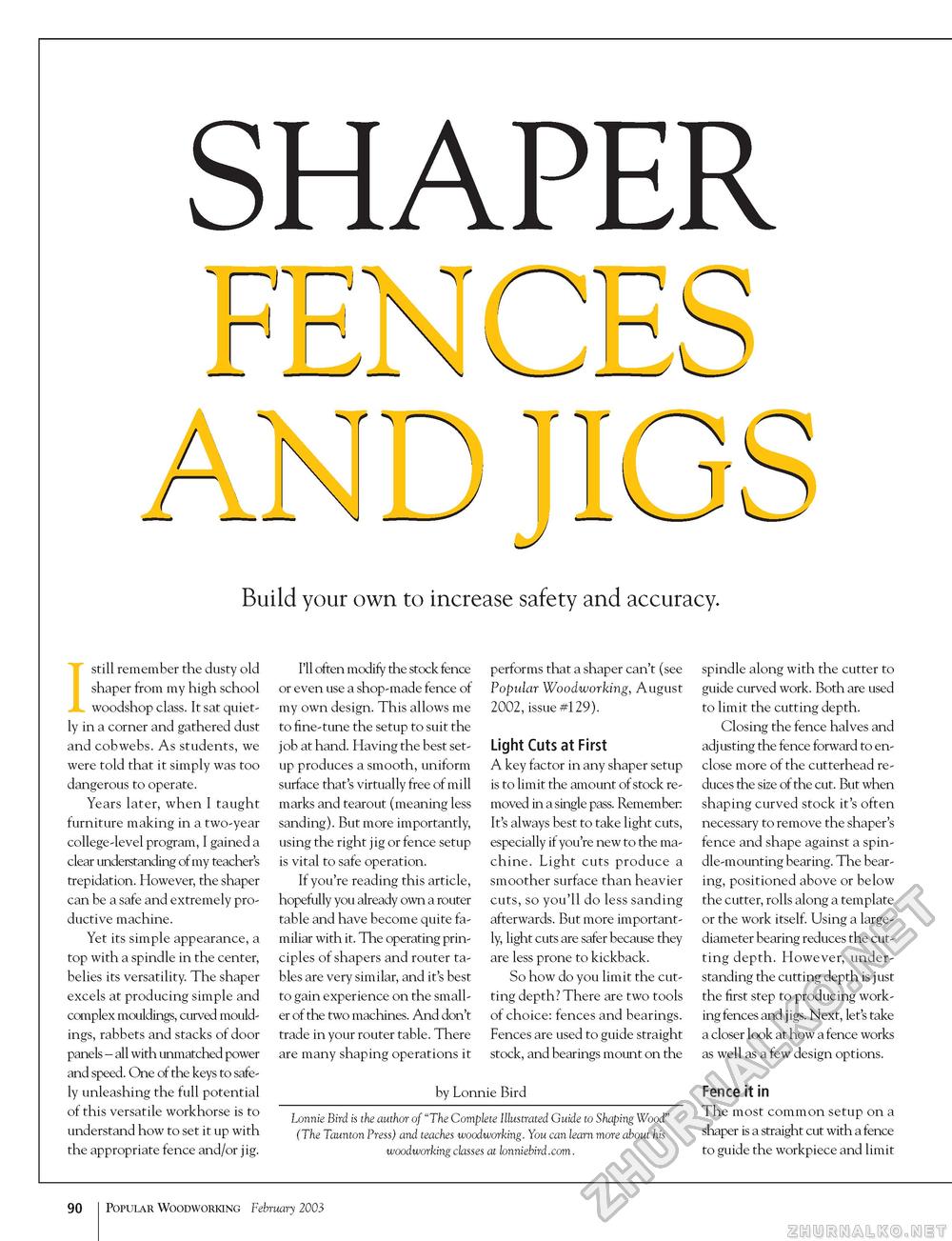Popular Woodworking 2003-02 № 132, страница 90
SHAPER/ r r > Build your own to increase safety and accuracy. 1 still remember the dusty old shaper from my high school woodshop class. It sat quietly in a corner and gathered dust and cobwebs. As students, we were told that it simply was too dangerous to operate. Years later, when I taught furniture making in a two-year college-level program, I gained a clear understanding of my teacher's trepidation. However, the shaper can be a safe and extremely productive machine. Yet its simple appearance, a top with a spindle in the center, belies its versatility. The shaper excels at producing simple and complex mouldings, curved mouldings, rabbets and stacks of door panels - all with unmatched power and speed. One of the keys to safely unleashing the full potential of this versatile workhorse is to understand how to set it up with the appropriate fence and/or jig. I'll often modify the stock fence or even use a shop-made fence of my own design. This allows me to fine-tune the setup to suit the job at hand. Having the best setup produces a smooth, uniform surface that's virtually free of mill marks and tearout (meaning less sanding). But more importantly, using the right jig or fence setup is vital to safe operation. If you're reading this article, hopefully you already own a router table and have become quite familiar with it. The operating principles of shapers and router tables are very similar, and it's best to gain experience on the smaller of the two machines. And don't trade in your router table. There are many shaping operations it performs that a shaper can't (see Popular Woodworking, August 2002, issue #129). Light Cuts at First A key factor in any shaper setup is to limit the amount of stock removed in a single pass. Remember: It's always best to take light cuts, especially if you're new to the machine. Light cuts produce a smoother surface than heavier cuts, so you'll do less sanding afterwards. But more importantly, light cuts are safer because they are less prone to kickback. So how do you limit the cutting depth? There are two tools of choice: fences and bearings. Fences are used to guide straight stock, and bearings mount on the by Lonnie Bird Lonnie Bird is the author of"The Complete Illustrated Guide to Shaping Wood" (The Taunton Press) and teaches woodworking. You can learn more about his woodworking classes at lonniebird.com. spindle along with the cutter to guide curved work. Both are used to limit the cutting depth. Closing the fence halves and adjusting the fence forward to enclose more of the cutterhead reduces the size of the cut. But when shaping curved stock it's often necessary to remove the shaper's fence and shape against a spindle-mounting bearing. The bearing, positioned above or below the cutter, rolls along a template or the work itself. Using a large-diameter bearing reduces the cutting depth. However, understanding the cutting depth is just the first step to producing working fences and jigs. Next, let's take a closer look at how a fence works as well as a few design options. Fence it in The most common setup on a shaper is a straight cut with a fence to guide the workpiece and limit 90 Popular Woodworking February 2003 |








